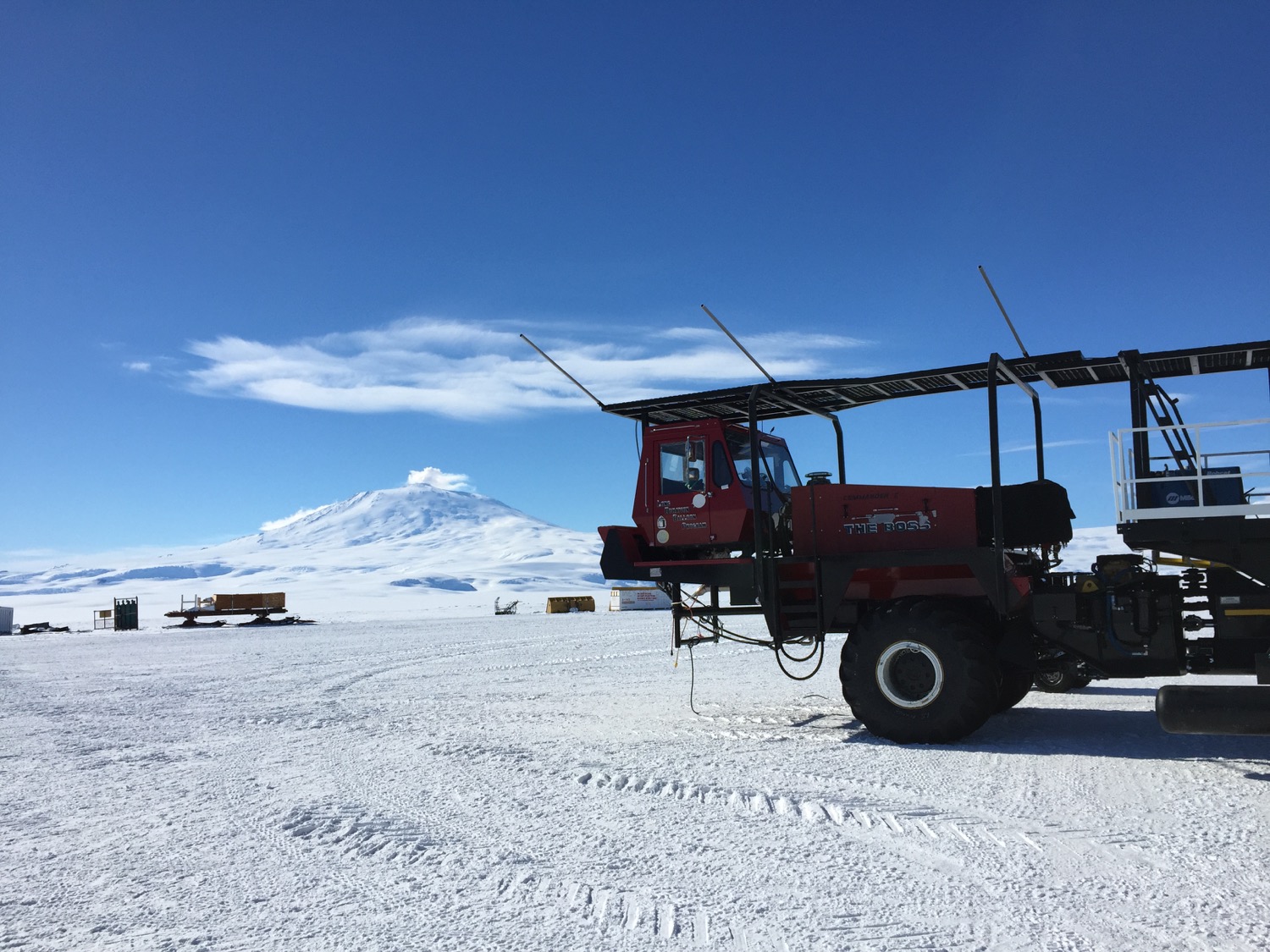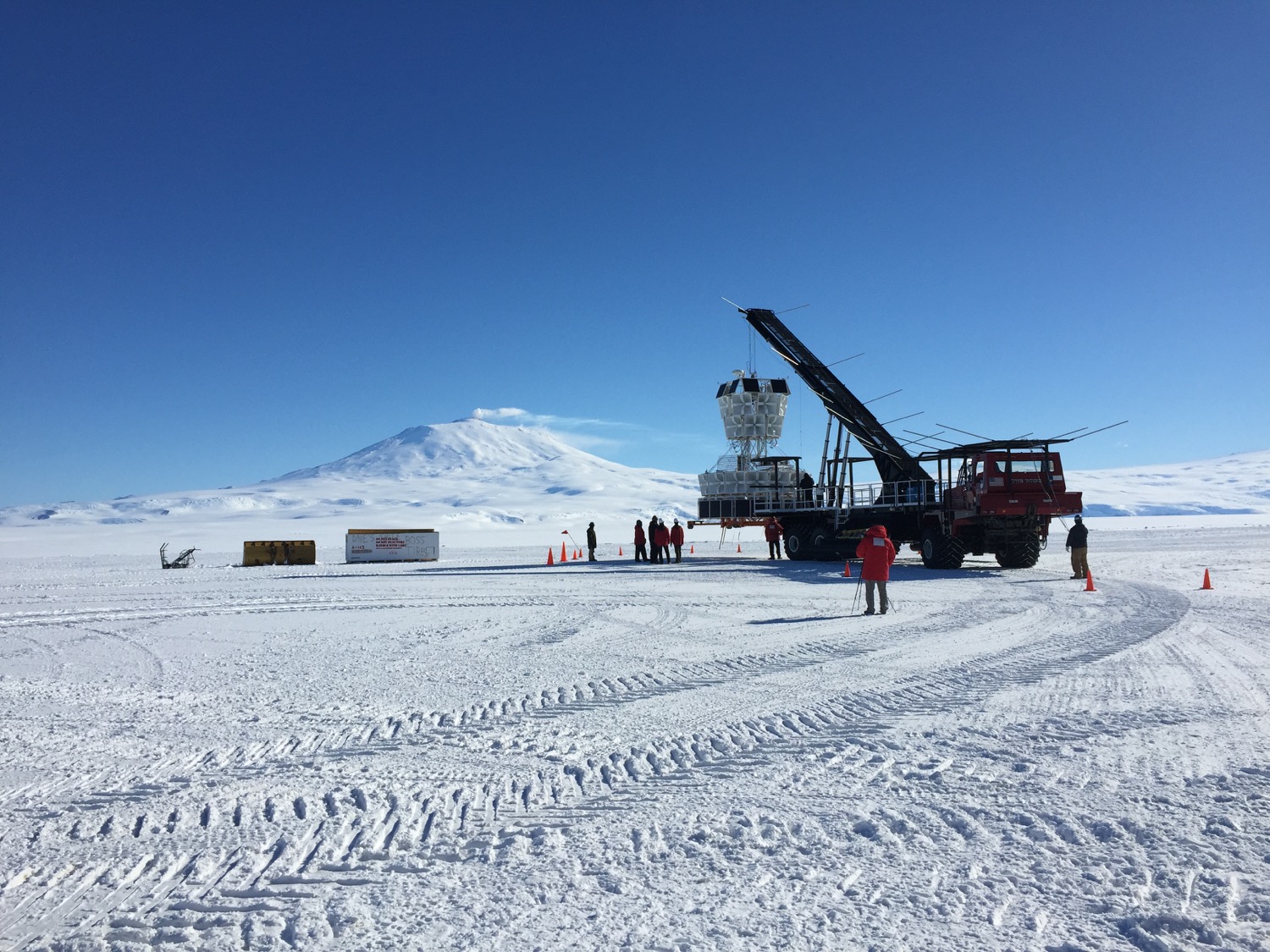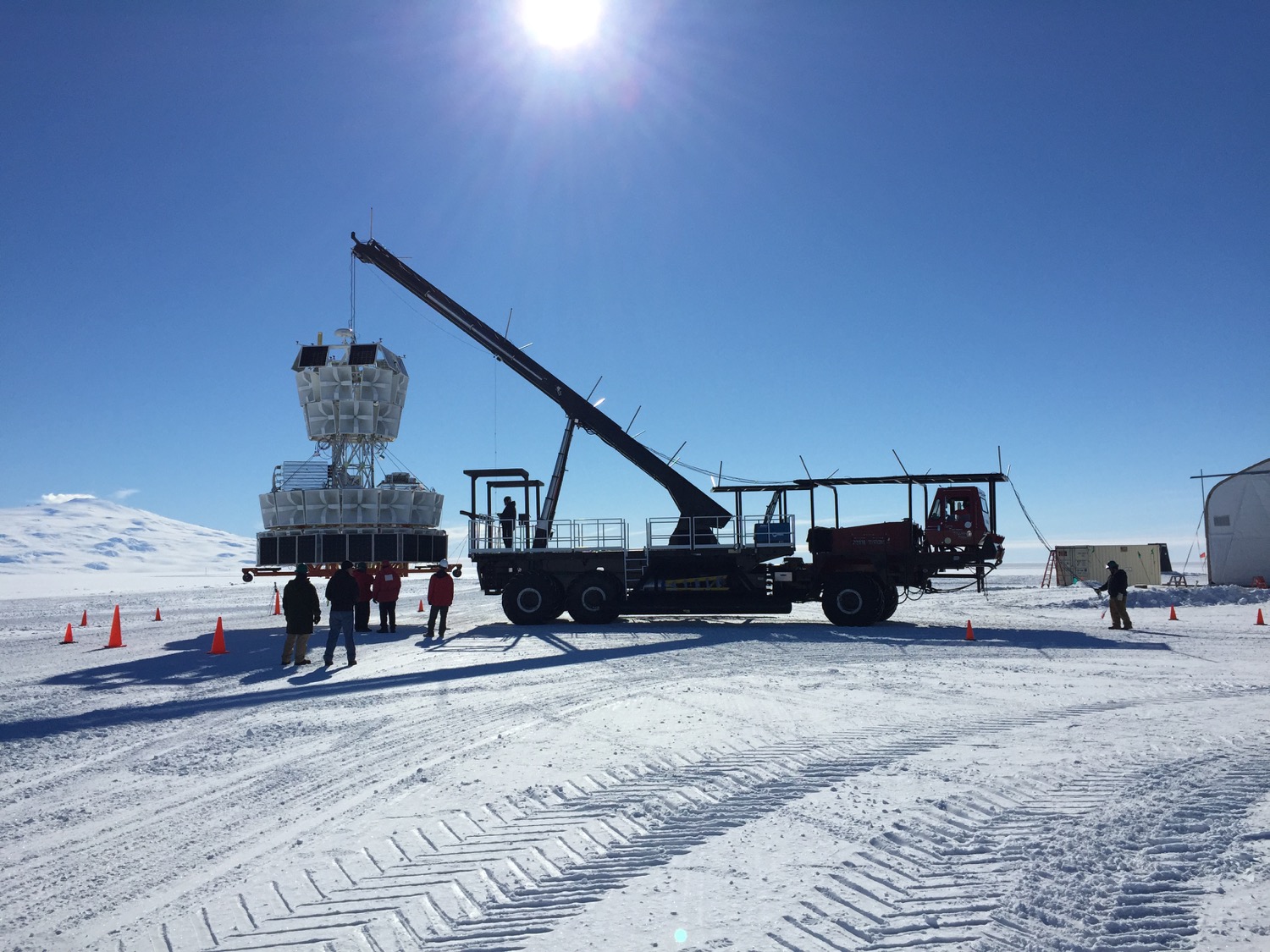It’s been an exciting week here on the Ice. The other two experiments here with us, ANITA and COSI, have declared themselves ‘flight ready’ and gone through compatibility testing with a hang test on the launch vehicle. That means the science teams are pleased with the functionality of their fully integrated instruments, and CSBF is happy with how the experiment interacts with their equipment. So now they wait for a launch opportunity.
The circumpolar wind pattern has set up as of about last week, but flight opportunities only occur when the weather is just right. It’s a bit of a Goldilocks-like situation: there have been four scrubbed launch opportunities over the past week because the winds were slightly too strong, or there was a weather system coming in that was deemed too risky. Moods have been swinging wildly as a possible launch opportunity (often, with an early morning start to the day) turns into a scrubbed launch. Hopefully, ANITA and COSI will launch soon. The longer their flights are delayed, the bigger the risk for us in getting a good launch window.
“The Boss” is the launch vehicle here at LDB, an impressive piece of machinery that hoists the payload, will drive it to the launch pad on launch day, and then drive around with the payload to follow the balloon’s initial trajectory and help guide the payload for a smooth start. COSI and ANITA both had their hang tests with the Boss over the past few weeks.



Things in the SPIDER highbay have also been moving along well as we prepare for our own flight. We always knew we’d be the final launch; the cryogenic aspects of our payload add a lot of time to the integration schedule, and the system is a complicated beast. Despite all that, we’re only about a week away from declaring ourselves flight ready! We’re now happily practicing scanning the telescope in full-flight-mode during the night shift, where the observations and detector optimization are all done autonomously. Next up: mounting the sunshields and solar panel arrays!
The above timelapse video shows the very first scans of SPIDER in the highbay here in Antarctica. I filmed this one in the hated vertical-iPhone orientation because I wanted to capture the entire system, from the pivot, ropes and spreader bar up at the very top, to the reactional wheel spinning at the bottom. A calibration tool we use called a Fourier spectrometer (FTS) is mounted on one of the telescopes. The FTS tells us the frequency response of our detectors. The time-lapse give a false sense of speed to the smooth, slow and steady scanning that occurs in reality.
This time-lapse cuts out the pivot and top of the ropes from view, but you get a better view of the telescope. In addition to the back-and-forth motion in azimuth, you can see very small motions in elevation.
